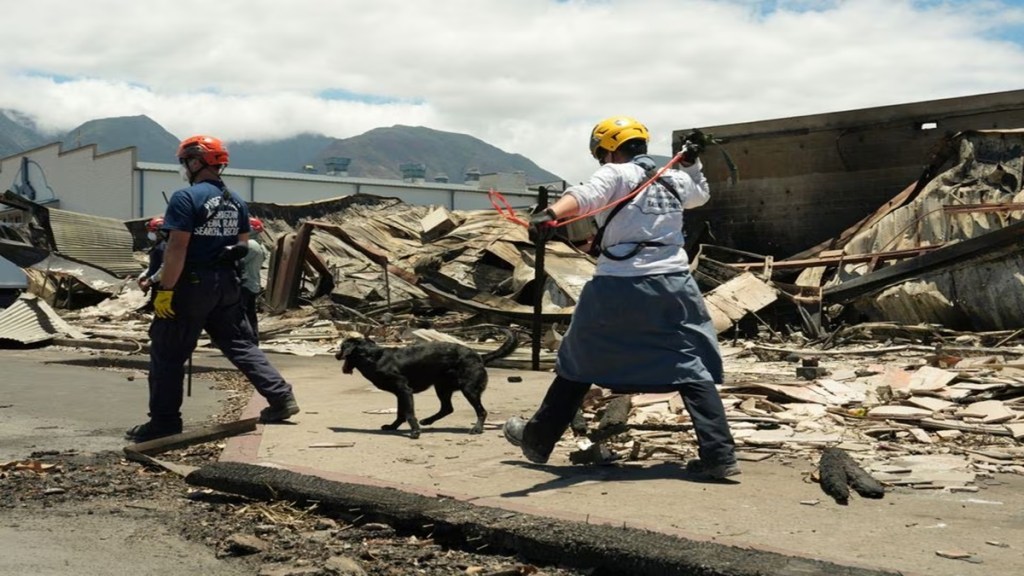After a rigorous year of training, a team of specialized search dogs was sent to Maui after the devastating wildfires last week. These dogs are supposed to learn to distinguish between human and animal remains. However, the right canine temperament is also crucial for this emotionally taxing task, according to Mary Cablk, an expert in detection and systems at the Desert Research Institute in Nevada. She has trained numerous canines, created training programs, and continues to participate in searches herself.
Cablk emphasized that dogs possessing specific traits – like a strong desire to play, an obsession with toys, confidence, agility, fearlessness of loud noises and unusual surfaces – excel in this role. These qualities contribute significantly to their effectiveness. Cablk, though not part of the Maui operation, highlighted that these traits are vital for search dogs that bring solace to grieving families by finding the remains of the missing.
The recent wildfires on Maui resulted in a devastating toll of 101 confirmed fatalities, marking it as the deadliest U.S. fire in a century. FEMA’s urban search and rescue teams, consisting of 20 dogs as of Monday, are assisting local authorities in sifting through the aftermath.
Jeremy Greenberg, FEMA’s director of operations, acknowledged the challenging conditions in Maui and stressed the importance of conducting the search safely and respectfully, even in the face of families’ desperation to learn the fate of their loved ones.
Leading difficult terrains
Navigating difficult terrains, each cadaver dog, after undergoing a year of rigorous training, can search multiple burned-down “footprints” of homes daily. The exact number depends on prevailing conditions. The fires in Hawaii destroyed around 2,200 structures, primarily residential, accounting for 86% of the total.
Dogs trained for fire scenes are adept at detecting burnt flesh and can distinguish between human remains and those of animals. Following a fire, these dogs are taught not to become overly excited and disturb the scene by running back and forth between remains and their handlers. Instead, they are trained to lay down once they discover something significant.
Highly-skilled training for canines
In response to lessons learned from past California wildfires, such as the deadly Camp Fire in Paradise, where 86 lives were lost, new protocols were introduced. Dogs are now trained not to enter the burnt-down structures but to signal their handlers once they locate remains. This change prevents further disruption of the scene and improves the identification process.
Cablk drew parallels between teaching hospitals’ use of cadavers for medical education and training dogs using human remains for search and rescue work. While some countries prohibit the use of human remains in training, leading to the use of animal remains, this can hinder rescue efforts. Cadaver dogs are conditioned to associate the scent of human remains with a reward, usually a chew toy. Successfully locating remains allows them to engage with the toy, which serves as their motivation.
“The dog’s paycheck,” as Cablk called it, is carried by handlers, and many dogs will even check to ensure the toy is with the handler before proceeding.
(With Reuters Inputs)

